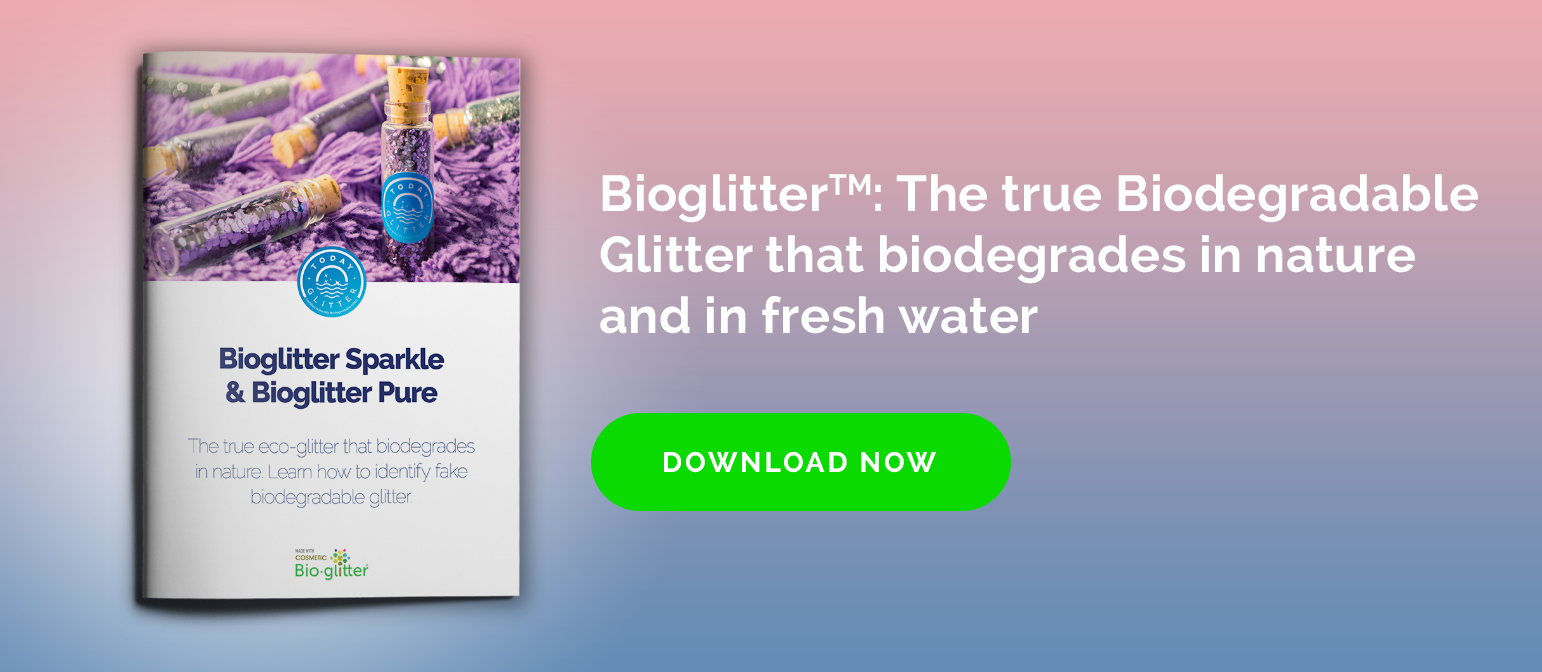What is the best eco-friendly glitter?
Plastic glitter is as far as possible from being eco-friendly. But what if we tell you that an environment safe glitter exists? Therefore also human friendly. Now you can glow and shine without any harm.
Traditional plastic glitter has been around us for decades. It has been used for crafts & arts, decoration, clothing, make-up, cosmetic formulations, toys, food, and a million other things. Traditional plastic glitter ends up in the sea and soil, contaminating it and taking all our flora and fauna to die.
To start, what is eco-friendly glitter?
Eco-friendly glitter refers to glitter products that don’t harm the environment and contribute to preserving our more precious resources like water and energy. Also, its elimination or degradation is natural, meaning that it doesn’t need any other mechanical processes and doesn’t contaminate water, land, or air.
Bioglitter™ Sparkle and Bioglitter™ Pure are the first naturally biodegradable glitter in the world; we will tell you more about this further in the post.
Toxicity in the regular plastic glitter
We can find multiple types of plastic glitter or even fake biodegradable glitter. They have one thing in common: their core polyester film. Most of these glitters claim to be biodegradable or compostable; however, they need to be disposed of in the composting bin. If they fall off your skin or go down the drain, they will contaminate the same way plastic glitter does.
Fake bio glitter:
-
It is a microplastic or behaves like one.
-
It lasts more than 100 years to degrade naturally.
-
To eliminate through burning, it creates pollution; burning plastic is extremely toxic.
-
Uses hydraulic methods for its creation, wasting thousand of liters just to make a small amount
-
It is impossible to separate from water or soil (our creatures die by absorbing or ingesting it)
-
Heavy metals like aluminum compose it (This is what we want to use on our makeup!?)
So, is glitter toxic? The answer is yes, regular glitter is toxic.
You may not be aware of the number of products containing glitter
We can find it in our daily lives, on the regular garments and products that we use, such as clothes, accessories, beauty products, makeup, toys, cards, wrapping paper, just to name a few of them.
Have we ever really stopped to think about this product? Or even more important, if it is harming our body and planet?
Thankfully, many brands have been thinking twice before using plastic glitter in their products, whether eliminating it or substituting it for an eco-friendly option.
Bioglitter™ best eco friendly glitter
As promised, now it is time to learn about Bioglitter™, the pioneer in eco-friendly and biodegradable glitter. It has been developed to tackle the part of microplastic pollution that glitter creates.
It uses plant-derived materials, especially from eucalyptus cellulose from certified plantations, replacing the polyester film that regular glitter uses.
What proves that Bioglitter™ is eco-friendly?
-
Eco credentials that prove it is biodegradable in natural environments
-
Certified compostable in industrial and home environments
-
Certified Freshwater biodegradable
-
Ok Biodegradable WATER by TÜV
We all know how hard it can be removing and cleaning up the mess glitter leaves around, especially if you have kids. So, here we have some quick tips to remove glitter from your kid’s hair and clothes and your home as well.
Remember, we can always shine without polluting the planet. In case you were wondering where to purchase the best eco-friendly glitter, you can find it in small and large quantities here at Today Glitter. If you don’t buy from Today Glitter, make sure your supplier offers original Bioglitter™ and mix with plastic glitter! This way, you can make sure you are having fun, glowing, and helping the environment at the same time.


